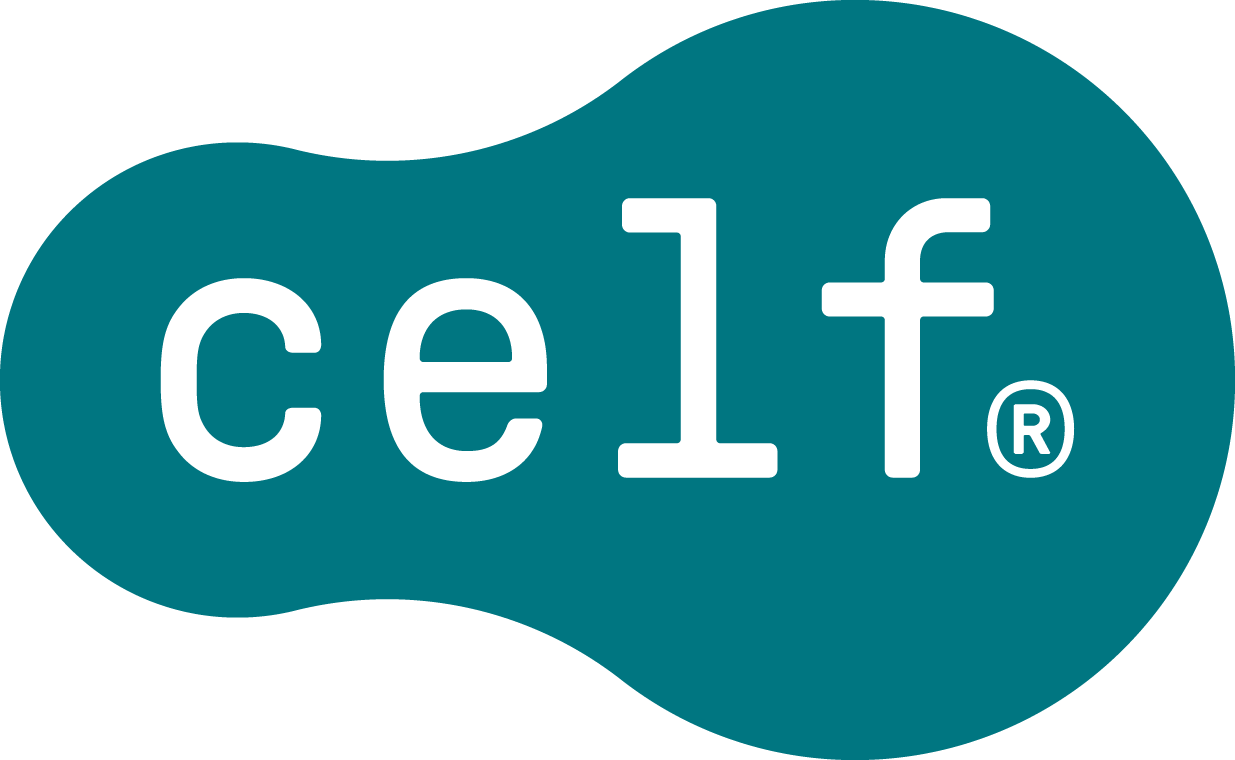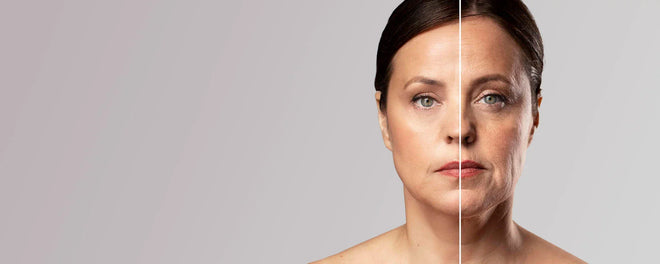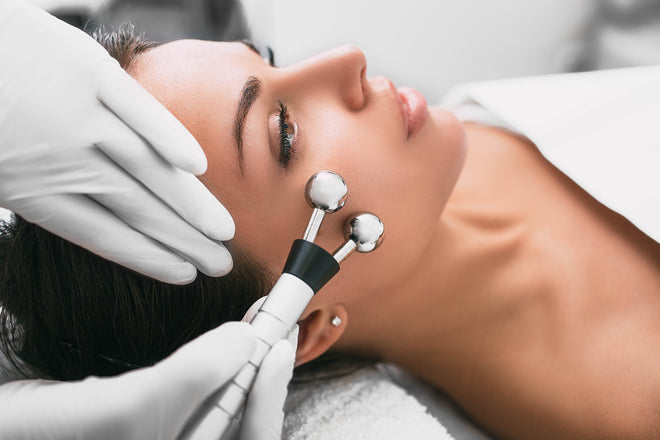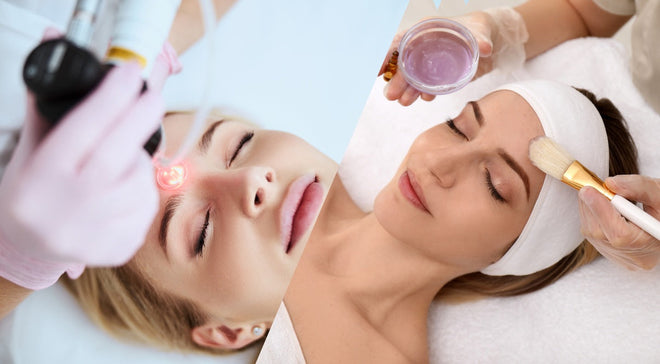Microneedling at Home: Tools, Safety & Benefits
Table of Contents
Take control of your skincare with effective, science-backed methods like CELF Microvibration™ Therapy.
The Rise of At-Home Microneedling
With the global microneedling market expected to hit a valuation of USD 1.13 billion by 2030 (Grand View Research), what was once confined to clinical settings is now a common feature in many home skincare routines. Microneedling, or collagen induction therapy, visibly improves skin texture, tone, and firmness through the stimulation of natural healing processes in the skin. However, as the trend gained vast popularity, so did the emphasis on safety, proper technique, and dependable alternatives.
Enter CELF Microvibration Therapy, a non-invasive, scientific method designed to stimulate collagen production via low-frequency vibrations. CELF offers a needle-free alternative for individuals seeking a gentler, non-invasive approach to skincare.
Take control of your skincare journey with innovative tools like CELF today. Explore CELF Microvibration.
What Is Microneedling, and How Does It Work?
Microneedling treatment creates tiny punctures on the skin by use of fine needles to cause a reaction from the body's wound-healing mechanism. It is this controlled trauma that activates fibroblast cells to produce more collagen and elastin—proteins that keep the skin young and resilient.
According to the Cleveland Clinic, the treatment of microneedling helps to improve texture, reduce pores, minimise fine lines, and diminish scars by accelerating skin regeneration.
Going into more of the adverse factors associated with microneedling, there is skin trauma, recovery, and the possibility of an incorrect at-home circumstance.
CELF provides a promising alternative for those seeking non-invasive skincare support, a form of microvibration therapy that stimulates fibroblasts and enhances cellular turnover, without punctures. It is for those who seek a gentler, science-based means to enhance skin vitality.
Not ready for needles? Discover the smarter, gentler alternative with CELF.
Main At-Home Microneedling Tools
A. Derma Rollers vs. Derma Pens
Two primary tools are used in at-home microneedling:
-
Derma Rollers: Manual instruments with fixed needle lengths, usually 0.25 mm to 1.5 mm.
-
Derma Pens: Motorised devices offering controlled depth and precision—often considered safer and more effective for targeted areas.
Source: Healthline – Microneedling at Home
B. What to Look For in an At-Home Microneedling Tool
-
Needle Material: Titanium or surgical-grade stainless steel is commonly recommended for hygiene and durability.
-
Sterilisation Compatibility: Important for avoiding infections.
-
Tip Design: Precision tips are safer for very delicate areas such as the under-eye.
C. Recommended Uses for Needle Lengths
|
Needle Length |
Recommended Use |
|
0.25 mm |
2–3 times/week |
|
0.5–1.0 mm |
Every 2–4 weeks |
|
>1.0 mm |
Only under professional supervision |
D. CELF as a Safe Alternative
Microneedling is a very useful procedure, but not one that many like because of the needles or the risk of inflammation that can come afterwards. CELF uses low-frequency vibrations to encourage fibroblast activity and support improved topical skincare absorption—without the use of needles.
Explore the future of collagen care with CELF—no needles required.
Advantages of Microneedling
A. Boosts Collagen and Elastin
Microneedling enhances dermal thickness and collagen content, smoothing wrinkles and improving firmness.
→ NIH Study
B. Fade Acne Scars and Hyperpigmentation
Microneedling encourages the natural turnover of skin cells, which may help improve the appearance of scars and pigmentation over time and is, hence, clinically proven to reduce atrophic acne scarring and uneven pigmentation.
C. Increases Topical Absorption
After microneedling, the skin becomes the most permeable; research has shown that some studies suggest microneedling can improve the skin’s absorption of hydrating ingredients such as hyaluronic acid and peptides.
D. Microneedling and CELF: A Comparison
|
Feature |
Microneedling |
CELF |
|
Invasiveness |
Moderate |
None |
|
Pain/Discomfort |
Mild–Moderate |
None to Mild |
|
Downtime |
1–3 days |
None |
|
Frequency |
Monthly |
Daily |
|
Serum Absorption |
Enhanced |
Enhanced |
|
Stimulates Fibroblasts |
✅ |
✅ |
|
Skin Barrier Risk |
Medium |
Low |
Experience a gentle, daily approach to supporting collagen activity with CELF.
Safety Requirements for At-Home Microneedling
A. Must-Know Safety Tips
-
Always sterilise tools before and after each use.
-
Use gentle skincare that does not contain alcohol after treatment.
-
Never microneedle over active breakouts, eczema, rosacea, or wounds.
B. Risk Factors
-
If microneedled improperly, it can increase hyperpigmentation on melanin-rich skin.
-
Infection can occur because of poor sanitation.
-
Overuse may compromise the skin’s barrier and cause sensitivity.
C. Who Should Stay Away From This?
-
Those having active skin infections, clotting disorders, or a tendency to keloid.
-
For these users, CELF offers a safer path to collagen stimulation with minimal risk.
Looking for an alternative to microneedling that's considered safer? CELF is non-invasive, safe to use every day, and suitable for all skin types.
Best Products to Pair With Microneedling
A. Before Microneedling:
-
Mild cleanser (no acids)
-
Alcohol-free toner
B. Post-Microneedling:
-
Hyaluronic Acid: Helps maintain skin hydration after treatment.
(e.g., The Ordinary Hyaluronic Acid 2% + B5) -
Copper Peptides: Accelerate the repair process.
-
Avoid retinol, AHA/BHAs, and vitamin C for 48 hours after treatment.
C. With CELF:
CELF is designed for gentle use and does not involve disrupting the skin’s surface.
Responsible Use: When to Go Pro vs. DIY
A. Why At-Home Isn’t a Replacement for Professionals
Professional microneedling has depth customisation, stronger results, and clinical-grade hygiene. So, DIY treatment should be complementary instead of substituting medical-grade treatment.
B. Where CELF Fits In
CELF bridges the gap between spa visits and daily care. It maintains collagen production between professional sessions or stands alone as a consistent, safe treatment for daily skin renewal.
Use CELF as your trusted in-between sessions tool—or as your go-to non-invasive treatment.
Real-World Results: Testimonials & Data
-
In a clinical study, 86% of participants reported improvements in skin texture after eight weeks of microneedling.
Want visible, transformative results—minus the downtime? See what CELF can do for your skin.
Should You Try Microneedling at Home?
Microneedling at home really can be done but should only be conducted with sufficient hygiene, patience, and understanding of the technique. For those ready to explore a slightly less invasive yet equally potent solution, CELF offers a consistent, non-invasive alternative for those looking to support skin health at home.
Professional skin treatments, state-of-the-art skin care products, and CELF Microvibration Therapy-Type II recognise a comprehensive collagen-building regimen that meets the needs of the skin.
Collagen care = smart care. Make CELF Microvibration Therapy a centrepiece of your skincare today. Shop Now
FAQs
Q: Is home use of microneedling FDA-approved?
A: Some devices are FDA cleared, although you should check before use.
Q: What serums should I avoid after treatment?
A: Avoid retinols, acids, or vitamin C for about 48 hours. Prepare to use something heavy on hydration and repairing the skin's barrier.
Q: What distinguishes CELF from microneedling?
A: CELF delivers collagen-stimulating benefits without needles, pain, or downtime—perfect for daily use.
Q: Can I use CELF every day?
A: Yes. CELF is designed for gentle, effective daily use across all skin types.
References:
-
Cleveland Clinic: How Microneedling Works
-
Healthline: Microneedling at Home
-
Mayo Clinic: Microneedling Overview
-
Grand View Research: Microneedling Market Report
-
Medical News Today: Microneedling Guide




